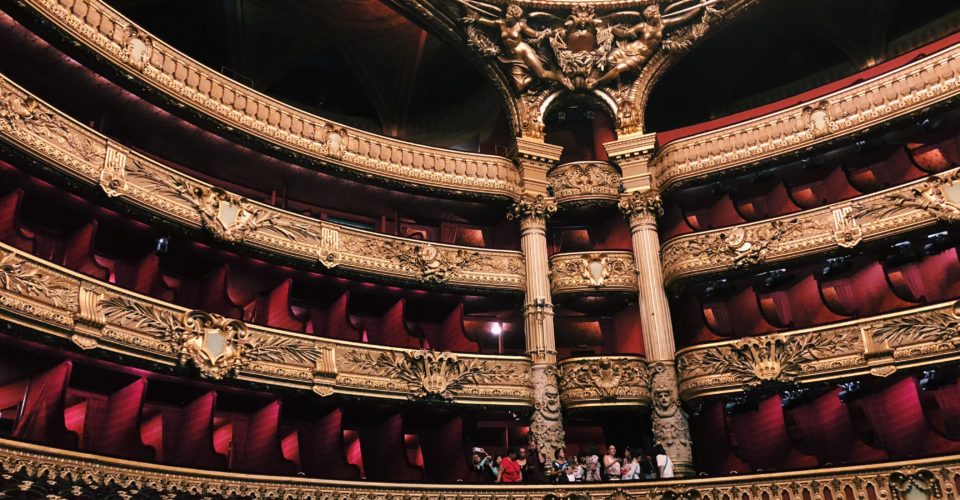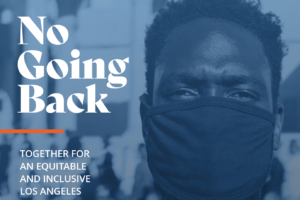“There is no going back, and in some ways that’s a good thing! This pandemic made it clear how necessary the arts are and what changes must be made in order to keep it alive and inclusive, especially for marginalized communities.” said Kristin Sakoda, Director of the Los Angeles Department of Arts and Culture.
By XOCHITL HERNÁNDEZ
EL NUEVO SOL
LOS ANGELES—Comedian Kristina Wong began her bit shouting with “Are you ready to rally!?…give it up for your favorite public servant, Kristina Wong!” In the background were American flags and a podium as if she is giving a political candidate speech. Yet this was not at a rally or comedy club downtown. This was over Zoom.
Not only is Kristina Wong a comedian but she is also an elected representative of Wilshire Center Sub District Five Koreatown Neighborhood Council and a performing artist. Like other performing artists such as Latino Theatre Company’s Artistic Director Jose Luis Valenzuela, Calexico-based artist Roberto Pozos, Broadway performer and LA County Department of Arts and Culture Director Kristin Sakoda, they have also found their artistic livelihood deeply compromised in this pandemic.
All these artists presented at an Ethnic Media Services panel for journalists on COVID’s drastic effect on the performing arts industry. They discussed the essential importance of the arts and why it must be cared for and salvaged, especially in this pandemic. Los Angeles is one of the arts capitols of the world and home to multiculturally diverse communities with over 220 languages spoken. There are over 200 museums, 500 heritage/historical sites, 300 theaters and 226 performing arts organization in general.
Just in Los Angeles County alone, Director Kristin Sakoda of the Los Angeles County Department of Arts and Culture states that the organization has been servicing, funding, and supporting Los Angeles non-profit arts organizations and centers for over 70 years with grants, commissioning artists, research, professional development, and cross-sector strategies in community and economic development. The Department encompasses 88 different cities, more than 10 million people, 81 different school districts, and more than 480 organizations ranging from theaters, concert venues, museums, cultural centers, and historical sites.
When COVID-19 hit, this industry was affected drastically.
In Los Angeles County, of the 250 non-profits who responded to the Department of Arts and Culture’s survey, it reported there was a collective financial impact of more than 20 million. 39% of these non-profit art sectors dipped into financial reserves, 40% furloughed or laid off staff, 78% were worried about a decline in philanthropic giving (a large part of how non-profits survive), and a high percentage worried about surviving as an organization at all. Americans for the Arts reported that arts organization nationwide had a 12-billion-dollar impact in lost revenue and anticipated expenses.
This is all too familiar to artists and public servants like Kristin Sakoda, Kristina Wong, Roberto Pozos, and Jose Luis Valenzuela all of whom primarily serve BIPOC communities (Black, Indigenous, People of Color). Sakoda emphasized that even before COVID hit, community organizations serving people of color were under-capitalized and still are. The Department of Arts and Culture is working to help fund these small and mid-sized organizations that serve historically marginalized communities. She emphatically asserted that the arts must not just stop at diversifying art forms but also work toward equity and inclusion. The way arts organizations can do this, is by being intentional with how they support, represent, and make their resources and arts available to BIPOC communities.
Jose Luis Valenzuela even commented that his work with the Latino community included East LA, UCLA, community colleges and the greater Los Angeles area. 20% of community college students are homeless and 70% are below poverty, but art helps save them in many ways. His play on immigration was cut short when COVID hit. But his company’s survival is vital.
“We are very few theatre companies of color in LA County. I think it’s about two Asian theatre companies and only about three or four African American companies, and about four Latino theatre companies in a city where 52% of the community in Los Angeles is Latino. And their budgets are super low. So, imagine nationally?” said Valenzuela.
In light of all of this, artists rapidly worked to respond in order to survive.
After losing her performance engagements and entire income, Wong decided the show must go on…from her own living room. Her show, “Kristina Wong for Public Office,” is a satirical comedy commenting on the 2020 Race for President, an act she similarly used to rally for her own seat as a city council representative. She also started the Auntie Sewing Squad, a group of women (a lot of them artists themselves) who are sewing masks and PPE for healthcare workers as well as incarcerated communities, people transitioning out of ICE detention centers, and BIPOC, low-income communities. She recently sent five relief vehicles to the Navajo Nation who are seriously suffering like other Native American and indigenous communities during this pandemic.
Muralist Roberto Pozos along with the newly formed Imperial Valley Equity and Justice Coalition meets with about 20 other artists over Zoom in order to launch arts opportunities commemorating the tragedies of the COVID pandemic. They will be putting on their first ever virtual art show in Imperial Valley leaving entries open to people of all ages, ethnicities, and skill levels in order to submit art, designs, and poetry as a sort of reaction/restorative healing art to the pandemic. They plan to move the art show outside for drive-byes as well. The goal is to also give a small budget to local artists who do not have the resources in order to fund their project as well as share relief funds with the community.
Jose Luis Valenzuela is experimenting with digital programming and virtually airing his plays and productions. “It makes no money, it’s worse than live theatre,” he laughed. Still, Valenzuela is committed, as he has been for the past 35 years, of keeping the Latino Theater Company alive and producing stories that reflect the diverse Latinx community of Los Angeles. “where do these people (BIPOC communities) see art and work that relate to them if not in our theaters?” asked Valenzuela.
Grants can help keep these theaters stay afloat, but Valenzuela shared that with even a small grant, more than half could go to the theatre’s light bill. Even with much hard work, it’s not easy to always have enough financial support.
“We went through almost 40 years without giving proper arts education in the schools. So now politicians who are 40 years old, may not have exposure interest in the arts at all. They were never having arts classes or going to the theaters, so now, all of that causes these politicians in power have no relationship to arts. So, it’s hard to get them to tell the community to support the arts and artists in our community.” said Valenzuela.
While these artists asserted how the pandemic has caused much hardship for the arts industry and organizations, they also affirmed how these hardships reveal and push for many great innovations and changes that can and should take place moving forward.
“There is no going back, and in some ways that’s a good thing!” said Sakoda. “This pandemic made it clear how necessary the arts are and what changes must be made in order to keep it alive and inclusive, especially for marginalized communities.”
Moderator Pilar Morerro stated that the one and only time the United State’s federal government heavily supported the arts financially was during the Great Depression to the beginning of World War II from 1933-1943 under President Roosevelt. Now, art directors like Sakoda are a part of a national conversation with the Americans for the Arts on a modern “New Deal” which would include the arts and cultural non-profits to be a part of infrastructure, workforce programs, and better funding for artists and organizations. She added it would depend on who is elected to office in November on if this “New Deal” will succeed but it can start with state and local government as well.
The LA County Department of Arts and Culture put resources on their website including a digital arts resource center, assortment of relief grants for artists and non-profits, online art education programs for students, as well as applications for their college internship program, the largest paid internship program in the country. They will also make the CARES Act Relief for hard hit arts sectors.
“We recognize creative work is essential to our recovery. They should be for everyone, not just elites. You see better outcomes in health, wellbeing, education, personal/professional success and more when they have the arts! We need the arts to be a part of recovery efforts,” said Sakoda.











